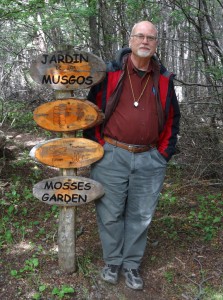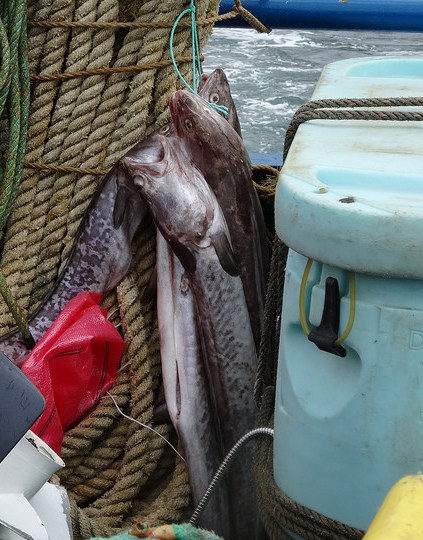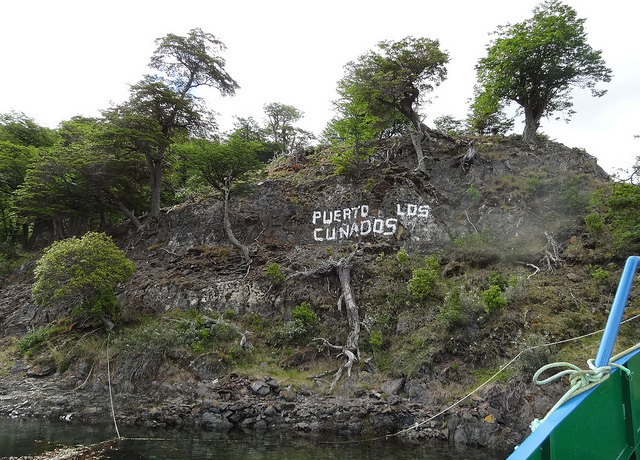From the Field: Bill Buck in Cape Horn 2014, Part 6
Posted in Travelogue on March 28, 2014 by Bill Buck
William R. Buck, Ph.D., is the Mary Flagler Cary Curator of Botany at The New York Botanical Garden. Every January for the last three years, Dr. Buck, a moss specialist, and a team of colleagues have journeyed to the Cape Horn region at the southern tip of South America, to document the area’s rich diversity of mosses and search for new species.
January 16, 2014; Puerto Williams, Isla Navarino, Chile (54°56’S, 67°36’W)

We returned to Isla Hoste the night before last, coming ashore at Punta Escala on Bahía Packsaddle. The day was colder than the previous one and sleet started falling shortly after we entered the field. It was a nice reminder of the “good times” we’ve had in years past.
I knew there was a stream somewhere in the direction I was headed, but every time I thought I heard running water it turned out to be the sound of the sleet pelting down in the forest. When I finally popped out of the vegetation and onto the beach, the stream was only a short distance ahead. Unfortunately, my scheduled pick-up meant I didn’t have time to work my way upstream. I left that to my colleagues John Brinda and Juan Larrain, who found a number of interesting mosses.
I would have wanted to collect everything myself when I was younger, but at my age I’m just glad that someone collected the material. I was simply happy to have had the time alone in the forest, finding what I did. There aren’t many advantages to advanced maturity, but a less competitive attitude is certainly one of them.

Fried fish was ready for us upon our return to the ship for lunch. We had rendezvoused the previous day with a small fishing boat, the Nativa, and purchased a dozen large fish known locally as congrio (Genypterus blacodes). This scaleless, eel-like fish is one of the most popular in the region. Unfortunately, throwing the fish into our Zodiac proved a poor decision. Waves tossed up over the deck and nearly filled the boat with seawater as we moved to our next destination. Gasoline and battery acid then leaked into the mix—a kind of ceviche in the making. Thankfully, the crew soon drained the boat and cleaned the fish, and no one mentioned any off tastes.
We followed lunch with a three- to four-hour trip north to our next port of call, a small, protected cove on the northwest coast of Navarino: Puerto Los Cuñados (55°00’S, 68°18’W). The weather was a gift with blue skies, calm winds, and warm air, and upon landing we all scrambled out over the rocky landscape to make the most of it. Barbara Murray was able to reach the rocks near the shore that were bedecked with Andreaea (the lantern mosses), and at no point have I seen Juan as happy during this trip as today. He returned with two full bags of specimens and about seven species of the genus Racomitrium.
As leader, I try to make the trip as successful as possible for everyone, but the weather is making that hard this year. We spent much of the night in that secluded harbor, departing at 4 a.m. Ernesto Davis needed to reach Puerto Williams by 9 a.m. today to coordinate an afternoon ceremony for the presentation of his new book about Navarino. We arrived at 8:30 a.m. and carried our luggage ashore at the ferry dock.

As an added surprise, I’ve been asked to meet with a number of arriving politicians in support of establishing a ministry of science for Chile. Ricardo Rozzi, the Chilean ecologist who was instrumental in the creation of the Cape Horn Biosphere Reserve, is here in his role as a biopolitician. Of course, I’m always glad to help promote science. I just hope my meager Spanish won’t be a problem.
Past Expedition Entries:
Photos supplied by Barbara Andreas.

